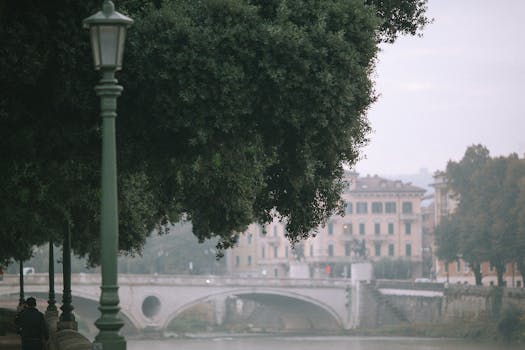
Urban Green Spaces: The Future of Outdoor Living in European Cities by 2025
Urban Green Spaces are becoming increasingly important in European cities as they provide a sustainable and healthy environment for citizens. With the growing awareness of climate change and the need for green infrastructure, urban green spaces are expected to play a crucial role in shaping the future of outdoor living in European cities by 2025.
Introduction to Urban Green Spaces
Urban green spaces refer to areas in urban environments that are covered with vegetation, such as parks, gardens, and green roofs. These spaces provide a range of benefits, including improved air quality, reduced noise pollution, and enhanced biodiversity. They also offer opportunities for recreation, socialization, and relaxation, making them an essential component of urban planning.
Benefits of Urban Green Spaces
The benefits of urban green spaces are numerous and well-documented. Some of the most significant advantages include:
- Improved air quality: Urban green spaces can help to remove pollutants from the air, improving the overall air quality in urban areas.
- Reduced noise pollution: Green spaces can act as a buffer, reducing the impact of noise pollution on urban residents.
- Enhanced biodiversity: Urban green spaces can provide habitats for a range of plant and animal species, enhancing biodiversity in urban areas.
- Recreational opportunities: Green spaces offer opportunities for outdoor recreation, such as walking, cycling, and sports, promoting physical activity and social interaction.
- Climate change mitigation: Urban green spaces can help to mitigate the effects of climate change by providing shade, reducing the urban heat island effect, and absorbing carbon dioxide.
Challenges and Opportunities for Urban Green Spaces
Despite the many benefits of urban green spaces, there are also challenges and opportunities that need to be addressed. Some of the key challenges include:
- Limited availability of space: In many European cities, space is limited, making it difficult to create new green spaces.
- Competing demands for land use: Urban green spaces often compete with other land uses, such as housing, transportation, and commercial development.
- Lack of funding: Creating and maintaining urban green spaces can be costly, and funding is often limited.
- Climate change and extreme weather events: Urban green spaces are vulnerable to the impacts of climate change, such as droughts, floods, and heatwaves.
However, these challenges also present opportunities for innovation and creativity in the design and management of urban green spaces. Some potential solutions include:
- Green roofs and walls: Using building surfaces to create green spaces, reducing the need for land and providing additional benefits, such as insulation and reduced stormwater runoff.
- Community-led initiatives: Engaging local communities in the design and management of urban green spaces, promoting a sense of ownership and responsibility.
- Partnerships and collaborations: Collaborating with private sector organizations, non-profits, and government agencies to secure funding and expertise for urban green space projects.
- Innovative design and technology: Using new technologies, such as green infrastructure and smart city initiatives, to create more efficient and effective urban green spaces.
Case Studies: Successful Urban Green Space Projects in European Cities
There are many examples of successful urban green space projects in European cities. Some notable case studies include:
- The High Line, London: An elevated park built on an old railway line, providing a unique green space in the heart of the city.
- The Canal Ring, Amsterdam: A series of interconnected canals and green spaces, creating a beautiful and sustainable urban environment.
- The Park of the XXI Century, Barcelona: A large urban park that incorporates green spaces, public art, and community facilities, promoting social interaction and recreation.
Conclusion: The Future of Outdoor Living in European Cities
In conclusion, urban green spaces are essential for creating sustainable and healthy environments in European cities. By 2025, these spaces will play a crucial role in shaping the future of outdoor living, providing numerous benefits, including improved air quality, reduced noise pollution, and enhanced biodiversity. While there are challenges to be addressed, there are also opportunities for innovation and creativity in the design and management of urban green spaces. By working together and embracing new technologies and approaches, we can create vibrant and thriving urban green spaces that promote the well-being of both people and the planet.





